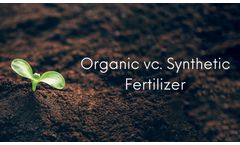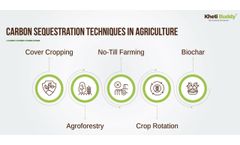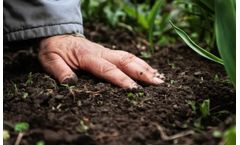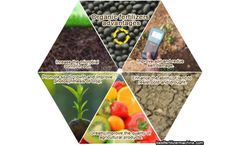Soil Microbial Activity Articles & Analysis
16 articles found
Feeding your plants is a fundamental aspect of nurturing a thriving garden, whether you’re aiming for a bountiful harvest or flourishing blooms. However, the choice of fertilizer significantly impacts the health of your plants and the environment. There are two primary types of fertilizers – organic and synthetic. In this article, we’ll delve into the pros and cons of each, ...
The presence of biochar also enhances microbial activity in the soil. The biochar’s porous nature provides habitat for beneficial soil microbes, fostering a symbiotic relationship with plant roots. ...
While farming activities have traditionally been associated with greenhouse gas emissions, innovative practices can turn agriculture into a significant carbon sink. This transformation hinges on effective carbon sequestration techniques, which capture and store atmospheric carbon dioxide in soils and plants. Implementing these methods is crucial in our fight against climate change. However, the ...
The porous structure of biochar facilitates the absorption of excess moisture, thereby reducing the risk of ammonia emissions and microbial proliferation. Enhanced Soil Fertility The incorporation of biochar into poultry farming systems can significantly enhance soil fertility and structure. Due to its high surface area and cation exchange ...
One key technological innovation that is revolutionizing the way farmers manage their land is soil sensor technology. Soil sensors provide real-time data on crucial soil parameters, enabling farmers to make informed decisions about irrigation, fertilization, and overall soil health. ...
ByJXCT
“Microbial populations, including their biomass, diversity and activity, can be measured and supply of available nutrients released over time are part of the soil health picture too,” he says. ...
The growth in human population has had an important impact on soil and the services and resources it can provide. The consequences of human activities on soil resources resulted in the loss of biodiversity, accelerated erosion, desertification, compaction, nutrient depletion, and loss of soil organic matter (SOM), which is primarily made up of carbon (58%). Considerable losses of soil carbon ...
They go together like salt and pepper – they’re better together When you have a strong and varied crop rotation, it produces a greater diversity in the soil microbiome, which improves activity both above and below the surface. One of the most critical parts about a healthy crop rotation is bacteria – both good and bad – because when you change crops, you change pathogens. ...
Fertilizer Industry The prospect of bioconversion of the high-content keratin wastes into cost-effective and environmentally acceptable resources, such as a slow-releasing nitrogen source for natural and organic soil fertilizer, The organic fertilizer produced by keratinase-mediated waste mineralization can promote the growth of plants, enhance soil water ...
After applying organic fertilizer, due to its beneficial biological activity, the soil structure was improved, the soil water and fertilizer retention capacity was increased, the loss of nutrients was reduced, and the effective utilization rate of chemical fertilizer was increased to more than 50%. ...
Carbon based fertilizer processed by fertilizer production line can fundamentally improve the problem of soil hardening and soil fertilizer decreasing. In addition, because humic acid is a high molecular compound with multi-functional groups, it can provide sufficient carbon source and energy for soil microorganisms, promote ...
Soil organic matter (SOM) and microbial activity are key components of soil quality and sustainability. ...
A field experiment was conducted to study the influence of coffee effluent irrigation on performance of established robusta coffee, nutrient contribution and microbial activities in the soil. The results revealed that the field irrigated with coffee effluent from aerobic tank having COD of 1009 ppm, did not affect the yield of clean coffee (1309 ...
This study evaluated the influence of 20 annual land applications of Class B biosolids on the soil microbial community. The potential benefits and hazards of land application were evaluated by analysis of surface soil samples collected following the 20th land application of biosolids. ...
Other standards have been defined in order to predict the compost effects on soil properties: the index of biological stability (ISB), based on biochemical fractionation, evaluates the proportion of compost organic matter contributing to increase organic C in soils. ...
Little is known about the fate of P leached from litter during the wet season and the associated effects of soil microclimate on microbial activity. The effects of temperature, moisture, and litter leaching on soil microbial activity were studied on a transect across a seasonal wetland in ...













